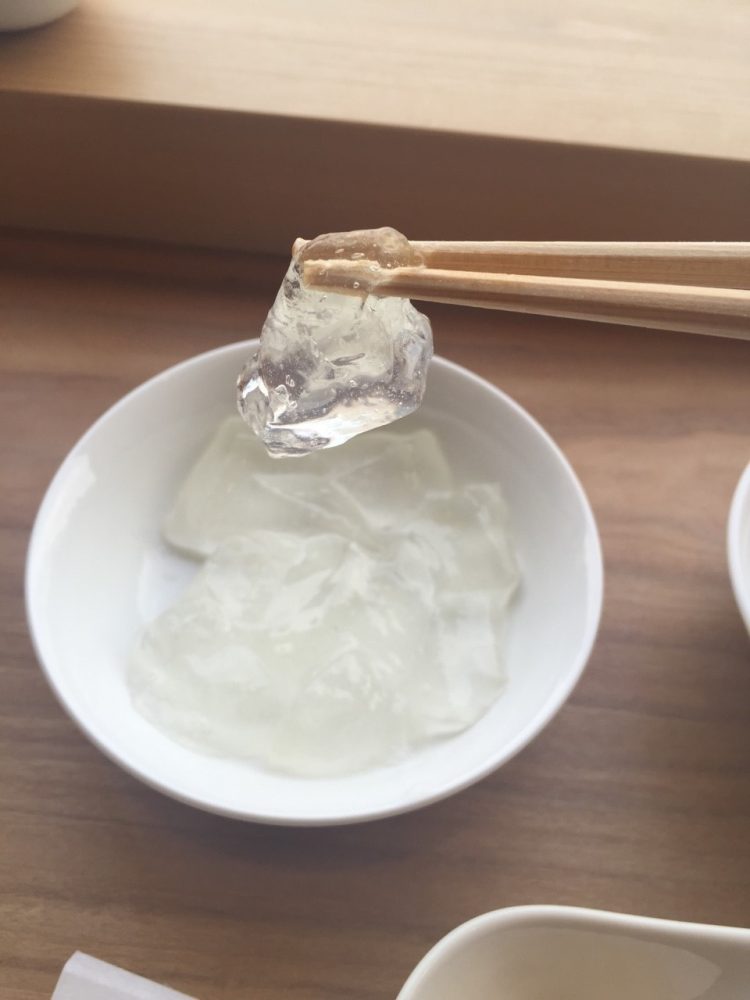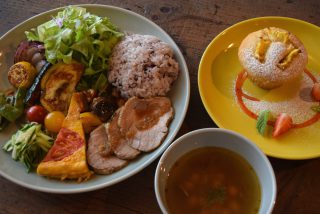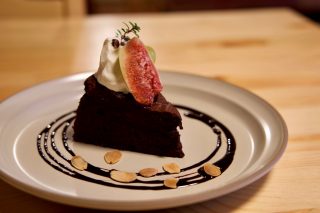Walking along Yoshino’s main street, I noticed several shops selling sweets in the shape of cherry blossom leaves and petals. Their dry, powdery texture combined with a light sweetness make them perfect accompaniments for green tea. After chatting with one shopkeeper, I learned that the sweets are called higashi and are made from kudzu starch.
Yoshino’s most famous plant may be the cherry blossom, but kudzu (also known as Japanese arrowroot) is also extremely well known. This climbing vine from the pea family grows in the mountains and fields around Yoshino and in many parts of Japan. Kudzu has been used in traditional Chinese medicine for 2,000 years to treat ailments such as flu, high blood pressure, and chest pain. It is mentioned in the eighth-century Man’yoshu, Japan’s oldest extant collection of poetry, as one of the seven flowers of autumn. Modern researchers have found that kudzu has more than 70 phytochemicals (which are said to promote good health), including isoflavonoids, and studies are continuing on its possible efficacy in treating chronic diseases such like diabetes.
The English “kudzu” derives from the Japanese kuzu, which is both the name of the plant and the name of a people who are thought to have lived along the Yoshino River and cultivated and traded kudzu in ancient times. Thus, Yoshino kuzu, as it is known locally, enjoys a long-established pedigree as a food and thickening agent and has other uses as well. In the past, fibers made from the root were also used to produce clothing, while kudzu leaves were used for livestock feed.
Kudzu are enormous vines: they can grow up to 10 meters long, and the root of one plant can weigh as much as 30 kilograms. After harvesting kudzu that have been growing for at least 30 years, the hairy bark is stripped off, and the roots are crushed and bleached in water to extract starch. This can be dissolved in different kinds of foods to impart a smooth, soft texture.
There are several ways to enjoy Yoshino kuzu. Aside from higashi sweets with tea, kudzu can be used to make tea as well as manju, a confection that often contains red bean paste. A Yoshino standard is kuzumochi. Not to be confused with kusamochi (sticky rice cakes wrapped in Japanese mugwort), kuzumochi are cubes of translucent, gelatinous Yoshino kuzu usually topped with brown sugar syrup and toasted soybean flour. It is a simple, light snack that also goes well with green tea.
A popular variation, called gomadofu, is a tofu-like gel made with sesame, milk, salt, and mirin. Gomadofu, topped with a dollop of wasabi or a splash of miso or soy sauce, makes a refreshing snack for summer and has long been a favored menu item for Buddhist monks in Japan. As a treat or as a cooking ingredient, Yoshino kuzu, which is available at a number of shops in the Yoshino area, can make a unique souvenir for family and friends back home.




